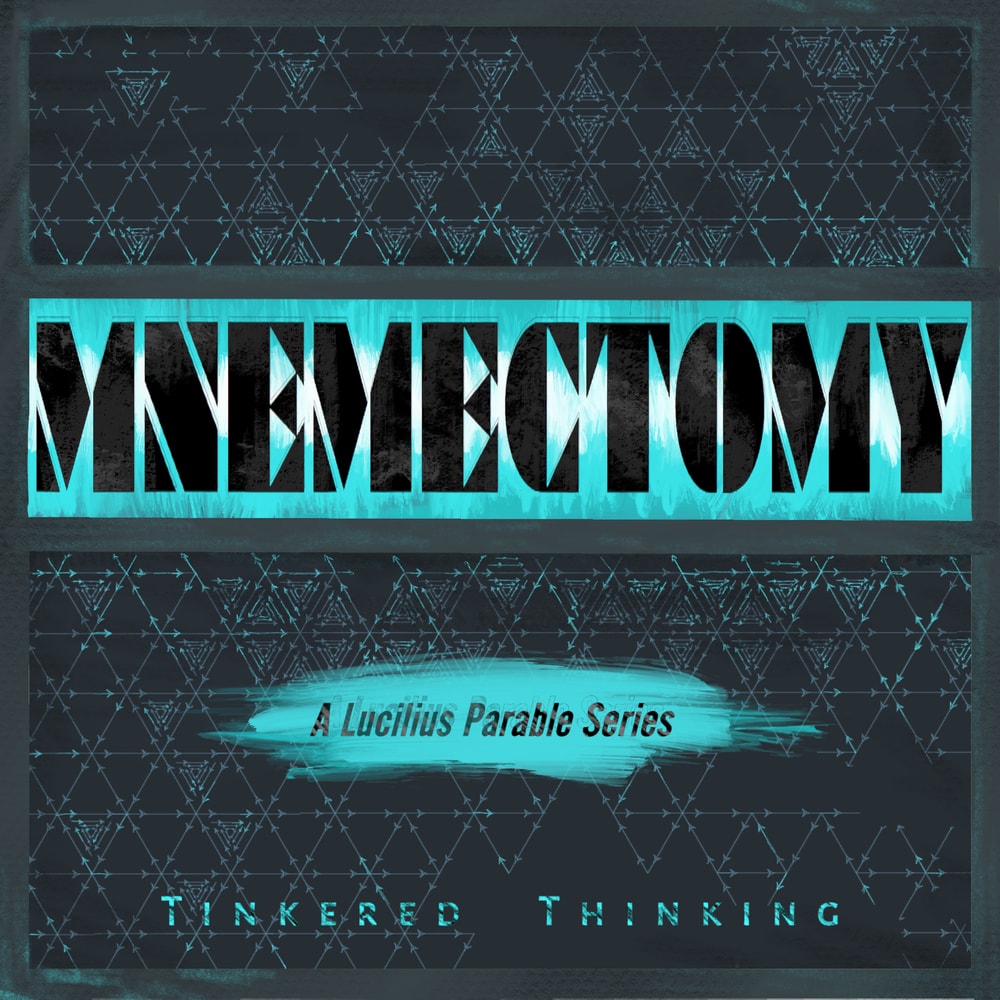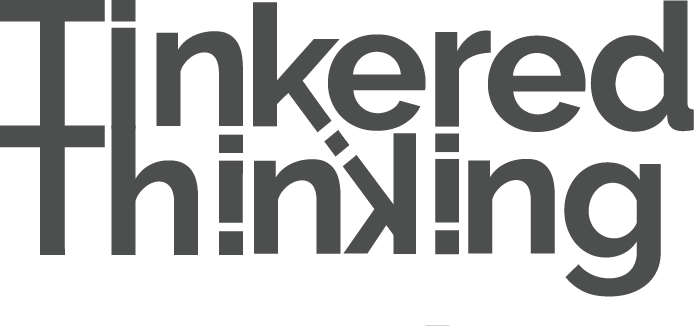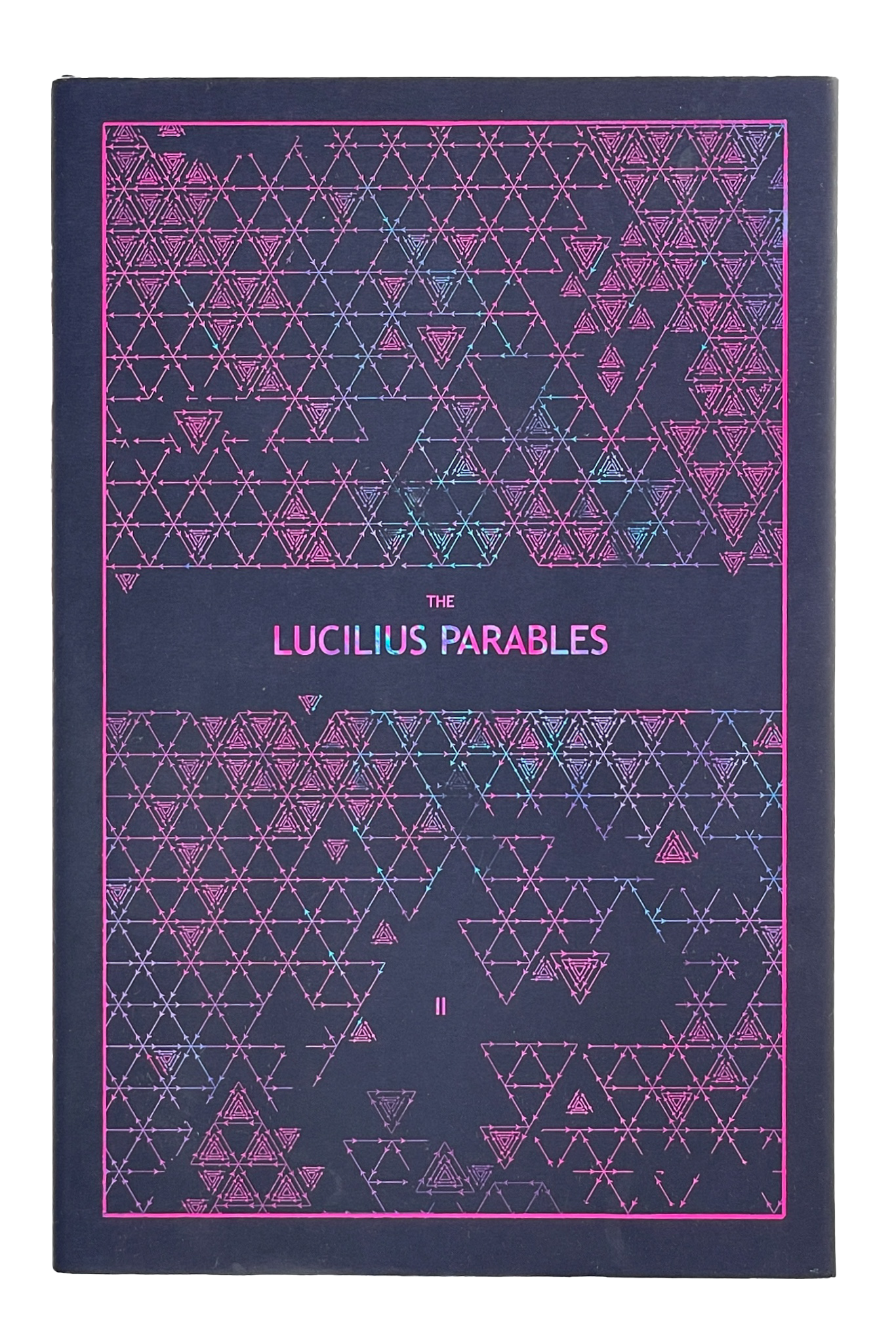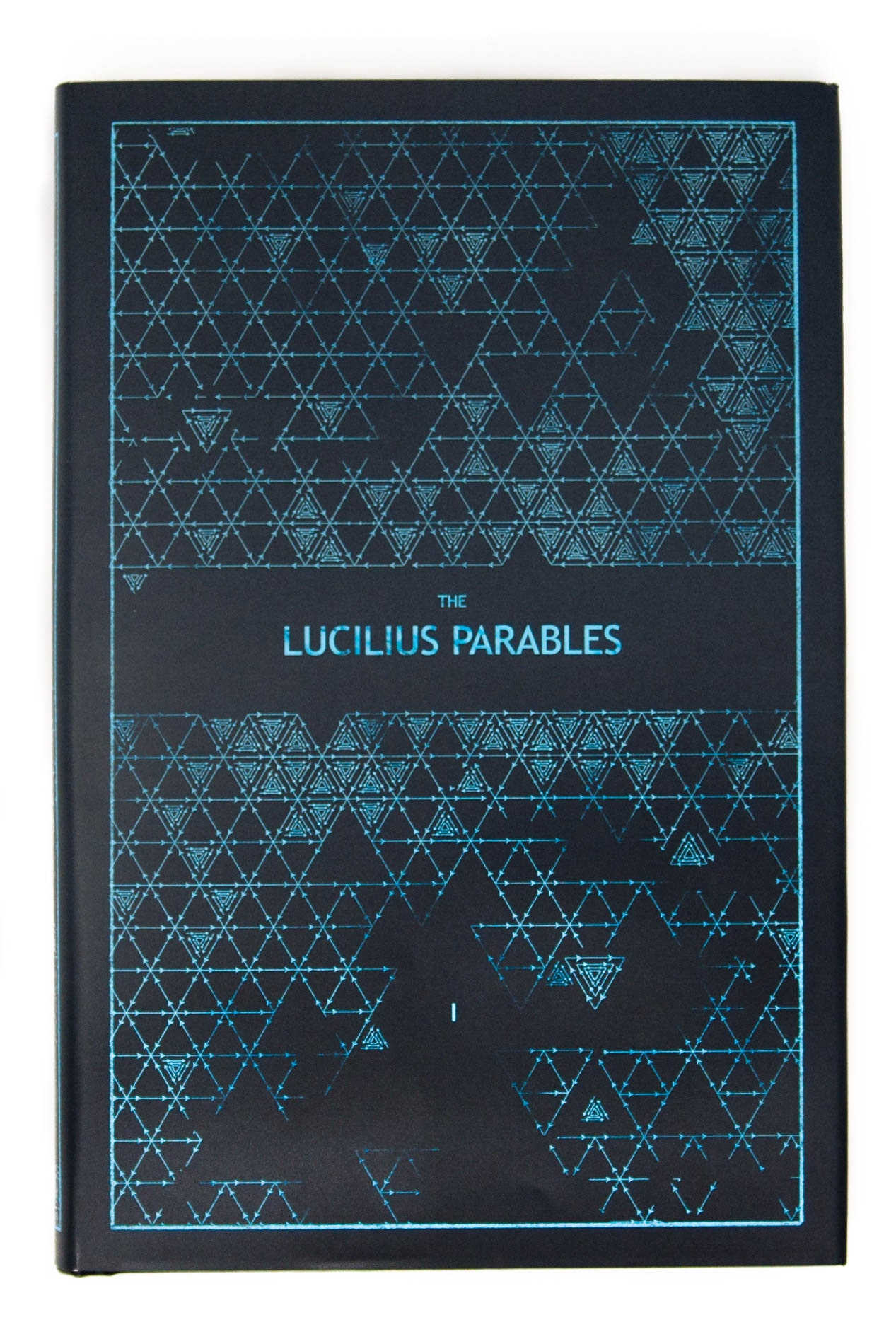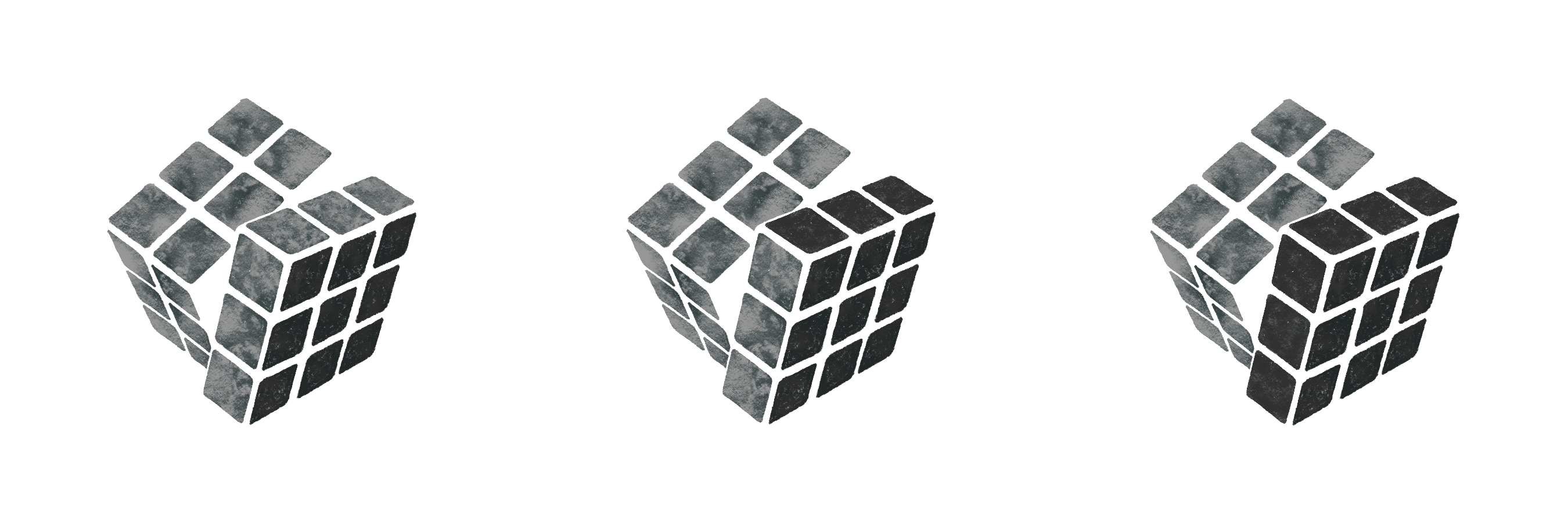Daily, snackable writings to spur changes in thinking.
Building a blueprint for a better brain by tinkering with the code.
subscribe
rss Feeds
SPIN CHESS
A Chess app from Tinkered Thinking featuring a variant of chess that bridges all skill levels!
REPAUSE
A meditation app is forthcoming. Stay Tuned.
HARD BOUNCE
March 29th, 2019
For anyone who has ever figured out the basic workings of a yo-yo, it’s clear that getting the yo-yo to come back up has everything to do with how it went down.
Masters of this simple toy will launch their yo-yo as hard as possible in order to create as much rotational motion as possible, motion which will eventually be recaptured and harvested on the way back up. Youtube any of these masters of the toy and you’ll be met by yo-yos moving through all manner of acrobatics with the string fully unraveled. The entire time this is happening the yo-yo is still spinning, but that motion hasn’t been tripped into coiling the string and thus making it climb back up to the hand.
We have the same phenomenon with a bouncy ball. The harder we throw it at the ground, the higher it will go. Beyond the equal lengths that a yo-yo falls and rises, however, a bouncy ball can be launched at the ground with such force that the resulting height is many times the height it initially started at.
We can mine these images for an allegory about how to pivot hard and in a difficult direction.
How we start or maintain a diet might benefit from such images. Of course there is yo-yo dieting, the act of losing weight and then binging it all back on. This fits out image somewhat, at least with the yo-yo, but how might it translate into a ball hurled at the ground with such force that it goes high into the sky?
For the yo-yo dieter, we can look at the equal and opposite motivations that propel such behavior. The diet is undertaken for health, or reasons of body image. There’s some sort of well-intentioned reasoning going on here that understands that something must be given up in order to gain something of a different category. Tasty food for a more pleasant experience while looking in the mirror, or at pictures, or that subtle feeling of increased well-being during the day. The corresponding opposite motivation is that evolutionarily programmed desire to consume as many rich foods as possible.
These two forces compete with on another, and in the yo-yo dieter they might achieve something close to equal influence, ensuring that neither really win, and all that’s happening is one variety of unpleasantness followed by another, ad nauseam.
Here we might try to switch out our allegorical images and interpret what this would look like in practice. Instead of a yo-yo, what would the diet look in terms of a bouncy ball hurled at the ground as hard as possible?
What this might look like in practice is someone who is finally fed up (pun intended) with the yo-yo dieting and wants to take more drastic actions, but instead of just going on a longer, harsher diet, such a person predicates doing such with a gluttonous binge of epic proportions. Such a person might set a date a week away for an extended diet to begin, and then, spend the ensuing week eating all manner of pleasurable and gluttonous food, and not simply enjoying, but force-feeding, in order to make one’s self somewhat sick. This might sound somewhat unpleasant and masochistic, and it is, but for potentially good reason. We could say that the person throwing the ball at the ground harder is crueler than a person who merely drops it, but if the ball can handle the force of transition that happens when hitting the ground, then the payoff is that much more. For the dieter, this might be akin to an internal monologue that is finally sick and tired of the nagging little voice that always wants the donut or the coffee cake or the mac’n cheese, and responding with: you want it? You got it, and feeding that little monster past it’s limits of enjoyment. For those who have not been in a healthy state for quite a long time, this might actually be dangerous, but for someone younger and more robust, this kind of experiment might be well worth the memories it creates. The gorging here is solely for the memory, of disgust it will create, so that when a healthier, difficult diet is undertaken, such feelings of sickness and disgust can be paired with temptations and thereby ameliorate their effect.
If such a categorical change in behavior can be maintained long enough for that behavior to form a structure of habit within the brain, then we can perhaps succeed in levelling-up our health and our life.
But such allegorical images might be useful in other realms. The real fruit of such images is to realize that success can sometimes be achieved by going in counter-intuitive directions.
This episode references Episode 150: Pivot Harder and Episode 42: Level-Up
PREDICTING THOUGHTS
March 28th, 2019
We have all had the eerie experience of struggling with a problem and by chance noticing some new aspect of the problem which ushers in a Eureka moment. In such a case, our attention has happened upon some stray and key detail.
Ideally we are directing this attention into unexplored territory in an efficient and systematic way. Unfortunately, our attention seems to bounce around more by the whims and wills of chance rather than by the design of some overtly conscious system. Our own consciousness seems to tile over this disturbing fact with feelings of identity and the ownership of one’s own experience. But the fact is, we cannot really predict the next thought that we will have.
Notice how the very word ‘prediction’ separates into pre- and –diction, meaning simply ‘before spoken’. Prediction, in this etymological sense means thought, as in, we can predict what we will say because we have a thought about it immediately preceding the event.
But can we actually predict what is before our diction? This is a redundant regression. Our definition and use of the word prediction has conveniently expanded beyond this more narrow etymology, but the functional problem of predicting a thought remains. To try and predict a thought is to actually have the thought, there is no ‘pre-thought’ that we can access. We can certainly plan on doing some type of work, or theorize about the kinds of thoughts we will have in a certain place and time and in a certain context, but the nuances and details do not arise until we are actually experiencing such a future moment.
We can rewind back to the introductory image of struggling to solve a problem and see that while we can’t predict actual thoughts, we can actually map out their negative space. What does this mean exactly? In visual art, negative space is the space around an object. We can easily imagine someone selecting an object in Photoshop with a function that detects it’s borders and then deleting that object. This would turn the object into a negative space. The areas of a jigsaw puzzle that appear as though they’ve been cut out of the piece can qualify as a negative space in this context. The useful aspect of negative space in this instance is that we have the capacity to slowly map out the negative space of a solution as we investigate a problem. This is somewhat like predicting a thought.
Eureka, after all is greek for “I have found it.” What exactly did Archimedes find when he exclaimed this? More important than finding a method for measuring the purity of gold, he found a thought. A system of thoughts that his mind predicted might exist. And like shuffling through a bucket of keys and trying different keys for a specific lock, his imagination kept generating more keys until one finally fit.
We inevitably have only one tool for this entire process: the question.
At the root of all thought and progress, the question is humanity’s single superpower.
Not only is it an open ended concept that propels us into a new adventure,
it is a mechanism for mapping, outlining, and in some sense predicting the future of our own thoughts.
For a different discussion of this tool, check out Episode 30 of Tinkered Thinking, entitled The Only Tool.
WHERE'S WALDO?
March 27th, 2019
The most difficult question and task of daily life is to ask: what should one pay attention to?
A young student of driving is on alert, paying attention to every little detail on the road for the main reason that such inexperience doesn’t know what to ignore. As we develop proficiency in a task like driving, we figure out what to ignore and what is important to pay attention to. Experienced drivers do not pay attention to a stray movement of a coffee cup behind the window of a Starbucks, but a similarly small object like a child’s ball bouncing on the sidewalk towards the road will – hopefully – evoke a sense of alert for the fact that there might be a child chasing it out into the street. This intuitive filter of attention is something that fine-tunes over time, and in such cases it seems reasonable to think that such a filter is attempting to pay attention less and less in order to ease the cognitive load. Of course, if this filter ends up filtering out too much information, important details might be lost.
Such a concept of important details overlooked or zeroed in on applies to any and all aspects of our life, especially those to which comprise the path of our goals.
Figuring out what is important may be the simplest and most basic question that confronts anyone with an aim and a goal. So often goals are thwarted by attention and effort paid to the wrong thing. Like barking up the wrong tree, we waste time and resources trying to make our aims happen with a concentration on the wrong details of our goal. Spending oodles of money on promoted Instagram ads for a product that doesn’t really translate well to the domain of photos might be a good example of this misdirected attention and effort. This is somewhat like searching one small section of a ‘Where’s Waldo’ picture where he doesn’t exist and failing to search the rest of the picture.
Knowing what to pay attention to is somewhat like playing where’s Waldo, but without having any idea what Waldo looks like. In fact, it’s even worse than this: on top of not knowing what Waldo looks like, he’s also a shape-shifter who turns into anything and everything else.
Phrased with this image, what exactly one should pay attention to in any given moment may in fact seem like an impossibly tall task. The enormity of options is why we constantly filter, though our filters can grow in dangerous directions that begin to filter out important details. This is where mechanisms usually decried as negative, such as self-doubt, hesitation and a lack of confidence can be incredibly useful tools. If we entertain no doubt about the way we filter the world. If we have supreme confidence in such a filter, and if we never hesitate with our interpretation, we are no better than a charging buffalo in the middle of a herd headed for a cliff.
The unfortunate and thrilling part of life is that time hauls us forward against any counter-wish, like a buffalo in the middle of the herd, unable to stop.
But even while moving forward inexorably, we can Zoom out on our own situation, as though taking a bird’s-eye view of the situation and ask: are we moving in the right direction? We might spot some new detail, a Waldo trailing off from the herd in a better direction, away from danger, and towards some better future.
While we cannot pause time, such an effort still requires that we pause our activities and rest our mind of the business. If we don’t exercise this ever-present opportunity often, our ability to zoom in and zoom out gums up and gets stuck, making it less likely that we’ll be able to shift perspectives, locking ourselves into some track of undecided end.
This episode references Episode 340: Discovering Details, Episode 54: Well-Oiled Zoom, and Episode 23: Pause
SOLEMN OPTIMIST
March 26th, 2019
William James defined ‘solemn’ as a state that includes some amount of its opposite. A solemn joy is a happiness that does not forget the existence of sadness. The solemn grief is a sadness that does not ignore the joy of past times and times to come.
This use of solemn is a useful default to develop because it safeguards against the vicious cycles that can quickly grow to dominate our thinking in unhelpful and detrimental ways. A negative thought about a person or situation that is balanced by some countervailing positive interpretation does not spin out of control and steer our mind into a Rut.
Such an attitude of mind might be interpreted as level-headed, but there is a significant difference between remaining always neutral and having the ability to entertain extremes of thought without getting lost on such slippery slopes.
This is the difference between being level-headed and being equipped with an Even Keel.
So many motivational speakers are merely attempting to pump people up with a blast of positive mental attitude. Which, like a joke, or reading an incisive and clever quote, feels good and most likely delivers a short term blast of dopamine. Rarely are such enthusiastic provocations long lasting, unless such experiences are turned into a daily exercise where such positive outlook is systematically replenished. Even so, such mental attitude is just first gear to get a person going.
An evolved flavor of such optimistic leanings would be in line with William James’ use of the word solemn.
A solemn optimism is an outlook that believes the future can be better but also holds in mind that it won’t necessarily be so, and could in fact be quite a lot worse than our present state of affairs. Such balanced extremes comprise the complete opposite of a neutral and inactive mind frame which is typified by salve-esque statements like It’ll be Fine.
The difference here is like walking a Tightrope with the extreme of falling to each side in balance, and taking a slide to some unknown place. The neutral mind frame characterized by statements like It’ll be fine willingly abdicates agency in order to be lazy. The Tightrope walked by the active optimist, on the other hand, is like a line pulled tight between reality and a dream of what that reality could be.
It’s curious to note how difficult it is to imagine solemn pessimism. Would this be like someone getting sucked down into a whirlpool of negativity while still looking back up at a bright sky? Or is a pessimism that keeps in mind optimistic possibilities a paradox? A person who identifies with such might claim to be more realistic, but the most realistic thing we can do is manipulate reality as a way of calibrating our imagination to the limits of reality, and flexing reality towards our better dreams. The mere act of doing and trying arises more in the optimist than in the pessimist, and by such the actions of the optimist certainly seem more concerned with what is and isn’t real, for the optimist tests for such. Then there’s the solemn optimist, who is never disappointed when something doesn’t work out, but notes the result, and steadfastly, moves on.
This episode references Episode 125: Rut, Episode 309: Even Keel, Episode 129: Positive Mental Attitude is Just First Gear, Episode 316: It’ll Be Fine, and Episode 88: Tightrope
CHERISH THE CHALLENGE
March 25th, 2019
The simplest reason is that there’s nothing else to cherish. Life is a challenge, and this applies to all parts, not just the difficult or unpleasant parts. For many it’s an incredible challenge to simply sit and enjoy a moment. This simplest of challenges is one that requires constant practice, otherwise, our ability atrophies and worry, anxiety and restlessness encroach upon us. To cherish the challenge is in effect to turn all in life that seeks to undo you and get the best of you on it’s head.
I bet you can’t do it.
This accusation could easily be at the heart of our existence. And yet, is there a more provocative and motivating accusation? How many times have we done something, and when asked why, we report: they said I couldn’t do it, so I did.
This is the lineage of the word ‘challenge’. It comes from the Latin ‘calumnia’ via French which means to make false and defamatory statements about someone. This etymological heritage is best summed up in the above challenge: bet you can’t do it.
For some this kind of underdog mentality comes easily, riles them up in aggressively productive ways. For others who are all too willing to defer, submit and admit lack of ability, it would be immensely useful to explore how this kind of reaction to a challenge exists within others. We need only make the challenge more acute to bring out the underdog in a demure person.
This is where an activity like martial arts can help. A person who has never felt this desperation to act will find it quickly when physically pinned and stressed to the point where alarms of survival start to ring in one’s psyche. Regardless of how someone find this bulldog spirit within them, it’s a necessary gear to have ready to employ. Not only does it help us meet the challenge, it can enable us to enjoy and even cherish the challenge.
The swaggering spirit of smiling at a challenge can, of course, lapse into hubris - the folly of heroes in the Greek literary tradition. But while this attribute was seen as a mistake, it can – if reframed be seen as a mechanism for self-regulation that creates a higher level of challenge.
For example early on in the Homeric epic The Odyssey, we have Odysseus held captive by Polyphemus, a Cyclops who tends a flock of sheep which he eats and who also happens to be a son of the god Poseidon. Odysseus, popularly known as a clever and cunning hero, easily outsmarts Polyphemus and escapes. It’s at this moment that high school English teachers will label Odysseus’ next action as a mistake of hubris. As Odysseus is sailing away, he yells at Polyphemus and tells the Cyclops his real name as a way of affixing an egotistical signature to his clever success. Polyphemus, in turn, calls upon his father Poseidon to make Odysseus’ life difficult. And indeed Poseidon does.
Our modern focus on luxury and comfort is ill-equipped to see what is actually happening in this exchange. The modern eye sees this move as Odysseus’ mistake, and implicitly engages in the time-old game of – if only he hadn’t done that… he would have had an easier time. But times are slowly changing and we are beginning to recognize the inherent good in difficulty. Whether this be in biology via research about the stress of exercise and fasting on the body, or in pop culture, such as in the popular show Billions where a character recently says “The very difficulty of it is why you must.”
Everywhere, we are finding instances where the harder road is ultimately the better road.
We can reframe Odysseus’ hubris as a self-regulating mechanism that snaps reality into a new level. Like with a videogame, success on one level grants one entry to the next level which is more difficult, requiring not just the skills of the previous level, but new ones that will be acquired in the midst of new challenge.
Odysseus may not be consciously making his life more difficult, but we can see his egoism or hubris as a trait that arises when life has become too easy. This model of ineptitude growing into bloated ability and then popping even maps onto the boom-bust cycles that we can see in economics, or the feast and fast mechanisms that have arisen in the body throughout evolutionary history. The inherent assumption of mapping over these domains is that the result is stronger than it was before the cycle, which is not necessarily always true, just as hubris and ego can drive a person off a metaphorical cliff from which they never recover. One of the points buried within the Odyssey is that if a person can survive such metaphorical falls and rise once more, they will be far better equipped than if they had never risen and fallen from such egoist heights.
The rest of the epic is perhaps the primordial example of the underdog spirit. Odysseus grinds through challenge after challenge, and though he finally enters his kingdom looking like a poor and decrepit beggar, he is, at that point stronger and better equipped than he ever was as a magnificent war hero thanks solely to his willingness to entertain the dangerous spirit of hubris within himself.
Nietzsche once wrote something to this effect: Be careful in casting our your demons, lest they be the best part of you. Through this lens we can identify Odysseus’ demon as hubris, which ultimately did him a great service by channeling his life down a more difficult corridor. He is, ultimately, willing to flirt with the dangerous parts of the human psyche in order to discover some greater good.
Whether it be technology or even something as basic as emotions, the great mistake is to label something once as good or bad and fail to see the gateways that exist in the border between these two concepts. It’s easy to elucidate this fact with something as simple as a knife: holding the wrong end is bad, but holding it correctly makes it useful and good. This sounds like a simple and dumb mistake, but the point may in fact radiate to all that we propound to be good or bad, and the real trick is to at least wonder what good could be rendered from something that looks wholly bad, and what bad might lurk in the heavenly situations we create and come across.
The one who can cherish the challenge can flip flop perspectives of good and bad to one’s own benefit and growth, and in so doing it’s possible to find the satisfying grist inherent in all the problems of life, let alone finding solutions to those problems.
As with so many things, this solely requires a shift in perspective and nothing else.
But, I bet you can’t you can’t do it.
This episode references Episode 42: Level-Up
-compressed.jpg)
